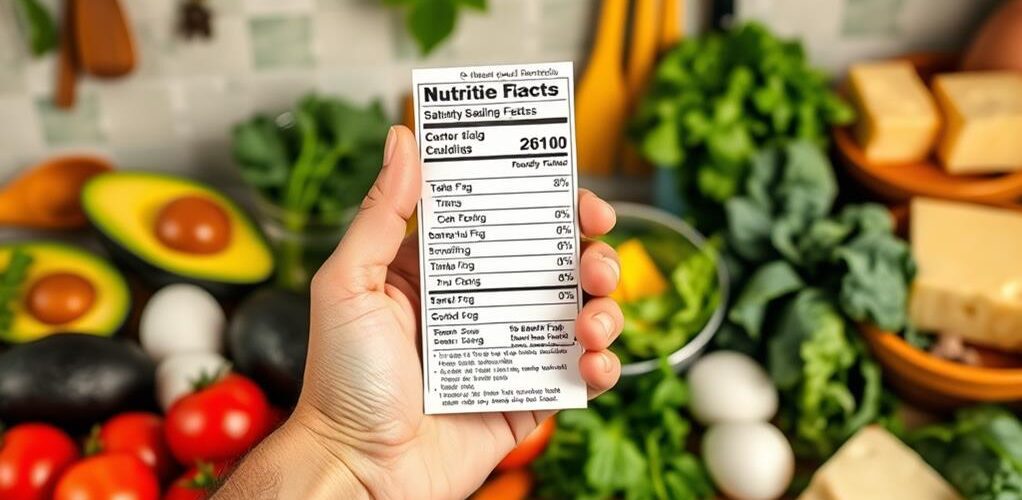
Understanding nutrition labels is key when on a keto diet to avoid hidden carbs and stay in ketosis. Look at total and net carbs, which you get by subtracting fiber and sugar alcohols from total carbs. Watch out for misleading claims like "low-fat" or "sugar-free" since they might still have carbs. Check ingredients for sneaky sugars like maltodextrin or sucrose, because they can kick you out of ketosis. Pay attention to serving sizes, so you don't accidentally eat too many carbs. With a bit of practice and careful label-checking, you'll master making keto-friendly choices, and there's so much more to it!
Key Takeaways
- Calculate net carbs by subtracting dietary fiber and sugar alcohols from total carbohydrates.
- Avoid added sugars and be aware of their various names like sucrose and fructose.
- Ensure serving sizes are understood to prevent accidental overconsumption of carbs.
- Check ingredient lists for hidden sugars and prioritize whole, natural ingredients.
- Focus on healthy fats like avocados and olive oil, and maintain appropriate macronutrient ratios.
Importance of Label Reading
Understanding food labels is essential for those adhering to the keto diet, as it enables precise monitoring of macronutrients, particularly net carbohydrates. This practice, known as label literacy, is vital for avoiding hidden carbs and staying in ketosis.
However, a staggering 62% of consumers do not base their food choices on labels, which can sabotage their keto efforts.
Accurate label reading helps you identify non-keto-friendly ingredients like added sugars and unhealthy additives. Imagine thinking you're making a good choice, only to find out that sneaky sugars are derailing your progress. Yikes!
Familiarity with serving sizes is also important. It's easy to misinterpret a label and accidentally consume more carbs than intended, which could knock you out of ketosis faster than you can say "carbohydrate."
Regular practice in reading nutrition labels builds confidence in your food choices. The more you do it, the better you get, kind of like riding a bike, but for your diet.
This skill supports adherence to keto principles and boosts overall health. So, while it might seem tedious at first, mastering label literacy is a game-changer for anyone serious about their keto journey.
Historical Context of Labels
Nutritional labeling started getting popular in the 1960s when people began caring more about what they ate, especially watching sodium and calories.
Fast forward to 1993, the Nutrition Labeling and Education Act (NLEA) made it mandatory for most packaged foods to have nutrition labels, aiming to provide clear and consistent information for better food choices.
Today, with new updates, labels now include vitamin D, potassium, and added sugars, showing how our understanding of nutrition has grown.
Evolution of Labeling Regulations
The evolution of labeling regulations has been a dynamic journey, markedly shaped by changing public health priorities and consumer demands.
Labeling history dates back to the 1960s when increased health awareness and dietary needs, like sodium and calorie content, began to gain attention. People wanted to know more about what they were eating, and the demand for clear information grew.
Fast forward to 1993, the Nutrition Labeling and Education Act (NLEA) marked a significant regulatory change. This act required most packaged foods to include nutrition labels, giving shoppers essential dietary details. It was a big win for consumers who wanted to make healthier choices but didn't have the information they needed.
Recent updates to labeling rules have kept up with our changing health priorities. Now, labels must list vitamin D, potassium, and added sugars. These changes reflect what we've learned about nutrition and what's significant for our health today.
The FDA also plays a critical role by regulating health claims on food packaging. This guarantees that the claims aren't misleading, helping us trust the information we read.
As dietary trends and health concerns evolve, so do the regulations, making food labels a reliable source of information.
Impact of NLEA Act
Introduced in 1993, the Nutrition Labeling and Education Act (NLEA) represented a transformative change in how consumers interact with food packaging. This act required food companies to include standardized nutrition labels on their products, giving people essential dietary information. Consumers could now see total calories, macronutrients, and daily values at a glance. This was a game-changer for anyone, especially those on specific diets like keto.
The NLEA impact was huge for consumer awareness. Before this, it was like trying to solve a mystery every time you picked up a packaged food item. Now, with clear labels, making healthy choices became easier.
Here's what the NLEA brought to the table:
- Standardized Nutrition Labels: Every packaged food had to show key nutritional info, making it simpler to compare products.
- Regulated Health Claims: Companies had to be honest and accurate about any health benefits they claimed, protecting consumers from misleading information.
- Evolving Requirements: Over time, the labels got even better, adding details like added sugars, vitamin D, and potassium, which keep up with changing health concerns.
The NLEA's focus on transparency has made it easier for everyone, especially keto followers, to manage their diets effectively.
Serving Size Awareness
Often misunderstood, serving size awareness is an essential aspect of accurately managing a keto diet. Serving sizes on nutrition labels indicate the amount of food that corresponds to the nutrient values listed. This can often be smaller than expected, leading to potential overconsumption if not carefully checked.
Implementing serving size strategies is significant. For instance, always check the serving size first, then calculate the nutritional content based on how many servings you plan to eat. Many packaged foods contain multiple servings per container. This means you need to multiply the nutritional values by the number of servings consumed to maintain accurate macronutrient tracking.
Portion control tips, like using smaller plates or pre-measuring snacks, can also help you stay within your daily limits, thereby avoiding mindless snacking. Misinterpreting serving sizes can result in unintentional overconsumption of carbohydrates. For those on a strict keto diet, which typically limits daily intake to 20-40 grams of total carbs, this can kick you out of ketosis.
Understanding Carbohydrates
When you're on a keto diet, understanding carbohydrates is super important, especially the difference between total and net carbs.
You need to look out for hidden sugars and starches that can mess up your carb count and kick you out of ketosis.
Total Vs. Net Carbs
To effectively manage a ketogenic diet, it is essential to distinguish between total and net carbohydrates. Total carbohydrates on a nutrition label include all sugars, starches, and fiber in one serving.
However, for keto dieters, understanding net carbs is imperative to avoid total carb misconceptions. Net carbs are calculated by subtracting dietary fiber and sugar alcohols from total carbohydrates, offering a more accurate picture of carbs that impact blood sugar.
For those on a keto diet, keeping net carbohydrate intake below 20-40 grams per day is essential to maintain ketosis. Misreading labels and focusing solely on total carbs can lead to unintentional overconsumption, derailing dietary goals.
Recognizing net carb benefits, such as better tracking and dietary management, can make a significant difference.
Here are three key points to remember:
- Calculation Method: Net carbs = Total carbohydrates – Dietary fiber – Sugar alcohols.
- Label Variations: Different countries label carbs differently; the UK often shows net carbs directly, while the US focuses on total carbs, requiring calculations.
- Practical Example: If a food item has 15 grams of total carbs and 5 grams of fiber, the net carbs would be 10 grams (15 – 5 = 10).
Understanding these distinctions helps in better managing a ketogenic lifestyle.
Hidden Sugars Awareness
Understanding net carbs is just one part of mastering a ketogenic diet. Equally important is being aware of hidden sugars that can sneak into your meals and push you out of ketosis. With over 50 different names for sugar, reading ingredient lists is like solving a puzzle. Terms like sucrose, fructose, and maltodextrin are just some of the sugar synonyms that can trip you up.
The updated nutrition facts label helps by highlighting added sugars separately, making it easier to spot those sneaky hidden sweeteners. However, many foods that seem healthy, like sauces, dressings, and granola, often contain sugars that can derail your low-carb goals.
Let's not forget sugar alcohols like maltitol, which can still affect your blood sugar levels. Opt for erythritol instead, as it has little to no impact on net carbs. Here's a quick table to help identify some common sugar synonyms and their potential impact:
| Sugar Synonym | Impact on Keto |
|---|---|
| Sucrose | High |
| Fructose | High |
| Maltodextrin | High |
| Erythritol | Low |
Staying vigilant about hidden sugars can make all the difference in maintaining ketosis and achieving your keto goals.
Interpreting Macronutrient Ratios
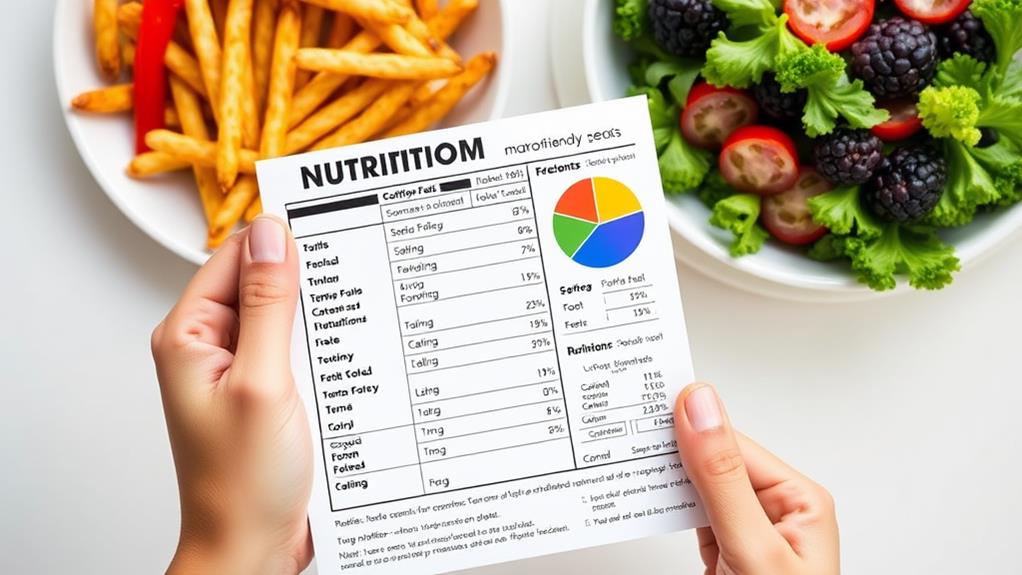
Steering through nutrition labels effectively is vital for anyone adhering to a ketogenic diet, which requires precise macronutrient ratios to maintain ketosis. A typical keto diet involves a macronutrient balance of about 70-75% fat, 20-25% protein, and 5-10% carbohydrates. This ratio is vital to guarantee the body stays in a state of ketosis, where it burns fat for fuel instead of carbohydrates.
When interpreting these labels, focus on the total carbohydrates listed. Subtract fiber and sugar alcohols to calculate net carbs, an important factor for staying within the daily limit of 20-40 grams of net carbs.
It's also important to moderate protein intake, as excessive protein can convert to glucose through gluconeogenesis, potentially disrupting ketosis.
Pay attention to the types of fat sources listed on the label. Fats are categorized into Total Fat, Saturated Fat, and Trans Fat. Prioritizing healthy fats is crucial, aiming to get at least 70% of your calories from fats.
Understanding the Percent Daily Value (%DV) for macronutrients helps gauge how much a serving contributes to your overall daily intake.
Here are three key points to keep in mind:
- Macronutrient balance: Adhere to the keto ratio.
- Net carbs: Subtract fiber and sugar alcohols.
- Fat sources: Focus on healthy fats.
Identifying Healthy Fats
For those committed to a ketogenic lifestyle, distinguishing between healthy and unhealthy fats is essential. Healthy fats should make up about 70-80% of your daily calories on a keto diet. But not all fats are created equal.
Focus on healthy fat sources like avocados, olive oil, nuts, and fatty fish. These foods are rich in omega-3 and omega-6 fatty acids, which are great for your health.
When you read nutrition labels, look for fats labeled as monounsaturated and polyunsaturated. These are the good guys. Avoid trans fats and anything that says "partially hydrogenated oils." Those are the bad guys in disguise. They can mess up your health big time.
Quality matters too. Always go for whole food sources rather than processed options. Whole foods have better fat quality and more nutrients.
For example, choosing a handful of almonds over a pack of almond-flavored chips is a smart move.
Ingredient List Analysis

When starting on a ketogenic diet, scrutinizing the ingredient list on food packaging is paramount. The ingredient list is organized by weight, so the first few ingredients listed are the most crucial. This makes it easier to spot non-keto-friendly components like sugars and artificial additives that can sneak into your diet and disrupt ketosis.
To maintain label transparency and guarantee quality ingredient sourcing, follow these guidelines:
- Shorter Ingredient Lists: Opt for products with fewer ingredients that are easily recognizable. This indicates minimal processing and higher food quality.
- Whole, Natural Ingredients: Prioritize items with real, unprocessed ingredients. These are more aligned with keto principles and promote better health outcomes.
- Avoid "Dirty Keto" Ingredients: Be wary of high-carb fillers and unhealthy preservatives. Even if a product is low in net carbs, these additives can undermine your health goals.
Additionally, be mindful of ingredients like sugar alcohols (e.g., erythritol, xylitol), which can be beneficial on a keto diet. They provide sweetness without greatly impacting net carbs.
Vigilance in reading ingredient lists guarantees that you stay true to your keto path, avoiding unexpected pitfalls.
Avoiding Hidden Sugars
Understanding the ingredient list is the first step in mastering keto-friendly eating, but it's equally important to be aware of hidden sugars that can sabotage your efforts. Many food products contain hidden sugars under sneaky names like sucrose, fructose, or corn syrup.
Imagine thinking you're safe only to find out later that your "healthy" snack was a sugar bomb! Over 50 different names for sugar exist, leading to major carb confusion. Knowing these sugar synonyms is essential to staying in ketosis.
One tricky ingredient to watch out for is maltitol. Even though some products might be labeled "sugar-free," they can still spike your blood glucose levels due to maltitol.
It's like sugar playing hide and seek! Foods labeled as "sugar-free" can be misleading; they might still contain hidden sugars or high-carb substitutes. Always check both the ingredient list and the nutritional information for total and net carbs.
And don't forget about artificial sweeteners like sucralose. They might seem like a good idea, but they can mess with your health and ketosis.
Recognizing Misleading Claims
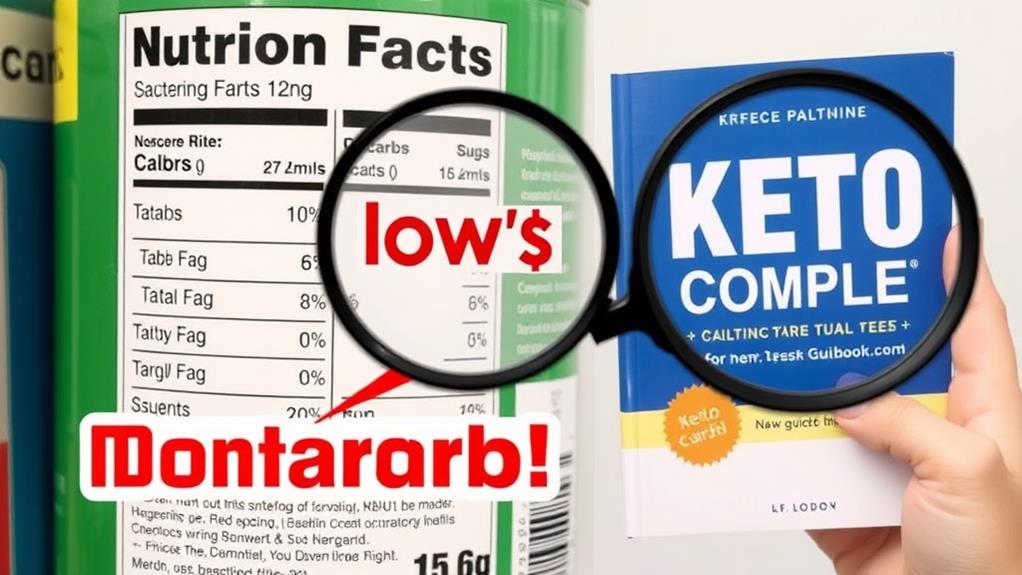
In the world of packaged foods, recognizing misleading claims is essential for anyone committed to a keto lifestyle. Food brands often use buzzwords like "low-fat" or "sugar-free" to attract attention, but these can be deceptive. A product labeled "low-fat" might still be high in carbohydrates, which isn't suitable for keto.
To navigate these claims, here are three key steps:
- Buzzword Scrutiny: Look beyond buzzwords. "Low-fat" isn't necessarily healthy, especially for keto, where low carbs matter more.
- Claim Validation: Validate claims by reading the back label. The front might say "sugar-free," but the ingredients could reveal hidden sugars.
- Ingredient Awareness: Familiarize yourself with common misleading terms. Words like "natural" or "organic" don't always mean keto-friendly.
Front packaging is often designed to mislead. Instead, focus on the nutritional information at the back. Some claims about health benefits lack scientific backing and might contradict what's in the product.
Practical Tips for Keto
When reading nutrition labels for keto, it's essential to keep an eye on serving sizes and calculate net carbs by subtracting fiber and sugar alcohols from total carbs.
Make sure your daily intake of net carbs stays below 20-40 grams to stay in ketosis.
Also, prioritize foods with healthy fats and minimal added sugars or artificial ingredients to keep your diet clean and effective.
Understanding Serving Sizes
Serving sizes listed on nutrition labels provide a standardized reference for the nutritional information supplied, which is particularly important for those adhering to a keto diet.
Understanding these serving sizes is essential to avoid serving size misconceptions and guarantee effective portion control strategies.
Many packaged foods contain multiple servings per container, so it's important to check the total number of servings to prevent unintentional overconsumption of carbs. Misinterpretation of serving sizes can easily lead to exceeding your daily carb limit, which for most keto dieters should be between 20-40 grams of net carbs.
Here are some practical tips to help you navigate serving sizes:
- Measure Accurately: Always use measuring cups, spoons, or a food scale to measure portions according to the serving size indicated on the label.
- Check Servings Per Container: Pay attention to the total servings per container to avoid accidentally eating multiple servings at once.
- Adjust Based on Goals: Remember that Percent Daily Value (%DV) is based on a 2,000-calorie diet. Adjust your servings according to your personal caloric and macronutrient goals.
Calculating Net Carbs
Although mastering the calculation of net carbs is vital for anyone on a keto diet, it often appears complex at first glance. However, once you understand the basics, it becomes much simpler.
Net carb calculations are essential because they help you stay within the 20 to 40 grams daily limit to maintain ketosis.
To find net carbs, start by looking at the total carbohydrates listed on the nutrition label. Subtract the dietary fiber and any sugar alcohols, like erythritol and xylitol, since fiber impacts the digestible carb count minimally and sugar alcohols have a lower impact on blood sugar.
For instance, if a food item lists 10 grams of total carbs and 4 grams of fiber, it has 6 net carbs.
Don't forget to take into account serving sizes. The net carbs listed apply only to the specified serving size, and eating multiple servings can quickly add up.
Also, look out for added sugars, as they contribute to total carbs and can throw off your net carb calculations, disrupting your keto goals.
Identifying Healthy Fats
Understanding net carbs is just one part of successfully steering a keto diet; another vital component is identifying healthy fats to fuel your body effectively.
To maintain ketosis, it's essential to prioritize healthy oil sources and beneficial fat types. Here are some practical tips:
1. Focus on Monounsaturated and Polyunsaturated Fats: Healthy oil sources like olive oil, avocados, and nuts are rich in monounsaturated and polyunsaturated fats. These fats are great for your heart and help keep your cholesterol levels in check.
When reading nutrition labels, look for these beneficial fat types to guarantee you're making healthy choices.
2. Avoid Trans Fats and Partially Hydrogenated Oils: These unhealthy fats can sneak into your diet and wreak havoc on your health. They can increase bad cholesterol levels and undermine your keto goals.
Always check ingredient labels and steer clear of products that list trans fats or partially hydrogenated oils.
3. Check for Added Sugars and Opt for Natural Ingredients: Added sugars can disrupt ketosis, even in products marketed as high-fat or keto-friendly.
Focus on foods with fewer, natural ingredients like grass-fed butter or coconut oil. These typically signify higher-quality fats without the unhealthy additives.
Quality Ingredients Focus
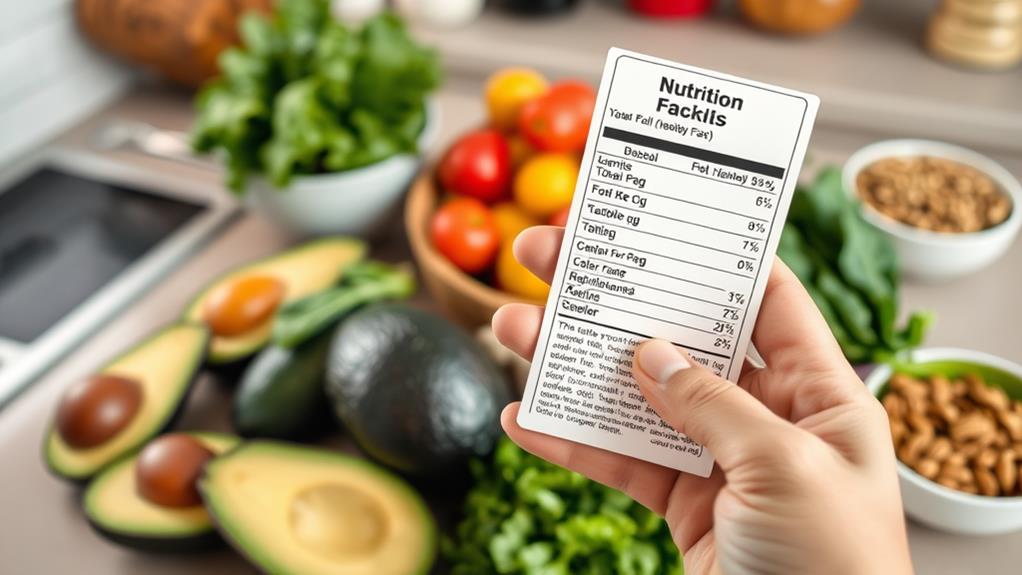
When following a keto diet, focusing on quality ingredients is paramount for maintaining ketosis and optimizing overall health. Reading ingredient lists in descending order of weight can be a game-changer. This practice aids in ingredient sourcing and quality control, helping you spot high-quality sources while avoiding products loaded with artificial ingredients and hidden sugars that can kick you out of ketosis.
Prioritize whole, unprocessed foods that have fewer ingredients. A shorter ingredient list usually means higher quality and better nutritional value for keto. Be on the lookout for sneaky sugars listed under different names like sucrose or fructose. These can add unwanted carbs and derail your keto progress.
Natural sweeteners like erythritol or stevia are your friends. They can sweeten your food without adding carbs, unlike artificial sweeteners like sucralose, which you should limit.
Foods with minimal or no added sugars and a short ingredient list are your best bet for staying keto-friendly and supporting your overall health goals.
Frequently Asked Questions
How to Read a Food Label for a Keto Diet?
To read a food label for a keto diet, focus on the serving size and examine the ingredient list for net carbs. Subtract dietary fiber and sugar alcohols from total carbohydrates to guarantee compliance with keto guidelines.
How Do I Know My Nutritional Facts for Keto?
To determine your nutritional facts for keto, focus on keto macronutrients by carefully reading labels, calculating net carbs, and ensuring an appropriate balance. Utilize nutritional tracking apps to monitor and maintain your daily intake within keto guidelines.
How Do You Read Carbs on a Nutrition Label?
To read carbs on a nutrition label, identify total carbohydrates and subtract the fiber content to determine net carbs. Be mindful of the serving size, as all values reflect the nutrients per specified portion, not the entire package.
How to Tell if a Food Is Keto Friendly?
To determine if a food is keto-friendly, scrutinize the nutrition label for low-carb sources, ensuring net carbs are minimal. Prioritize high-fat content and avoid hidden sugars or non-keto ingredients like maltitol that can disrupt ketosis.
Conclusion
Reading nutrition labels is vital for anyone following a keto diet. Understanding serving sizes, carbohydrate content, and hidden sugars helps make informed choices. Recognizing misleading claims and focusing on quality ingredients guarantees the diet's effectiveness. By mastering label reading and interpreting macronutrient ratios, better health and successful keto adherence are achievable. Practical tips and historical context further enhance this essential skill. Diligent label reading is a key component of maintaining a healthy, keto-friendly lifestyle.


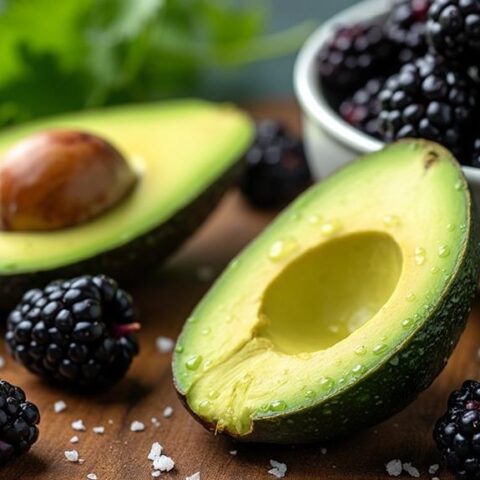
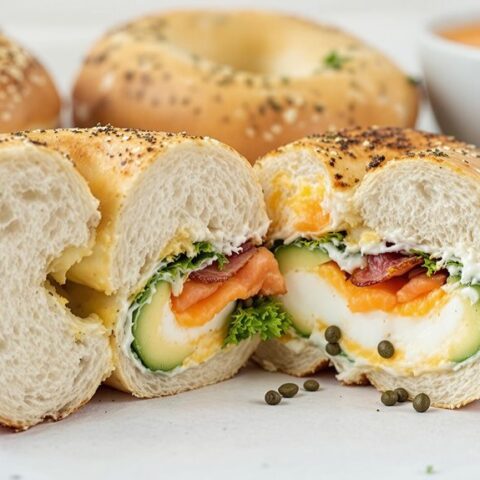




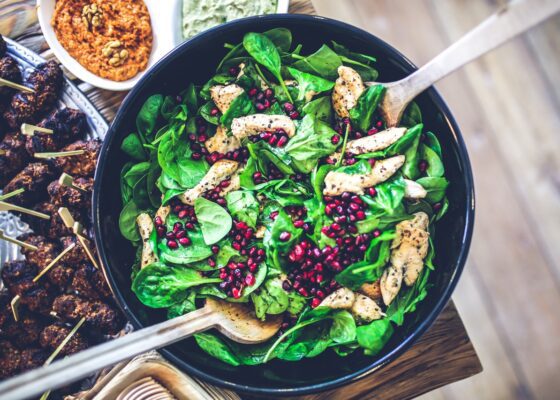

No Comments